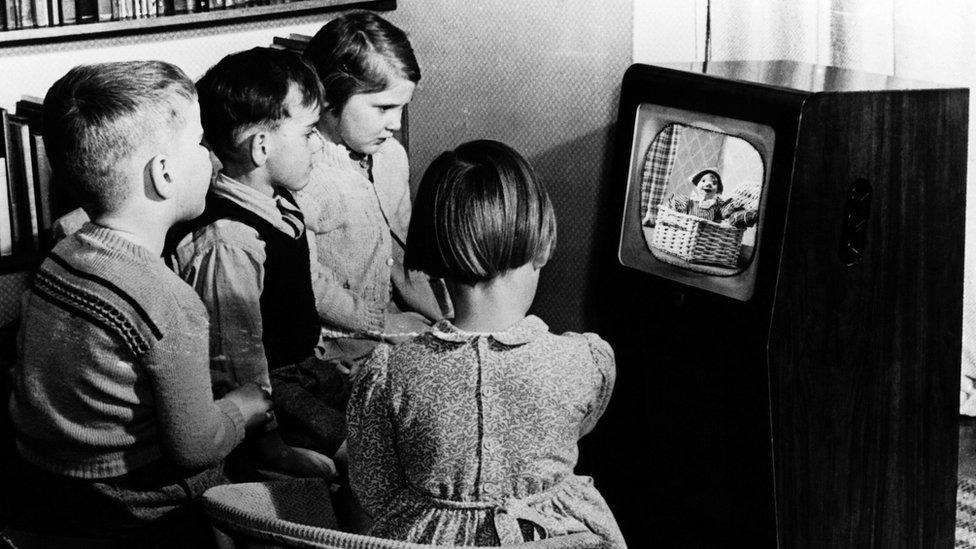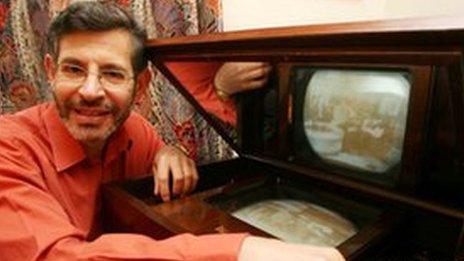Thousands still watch TV in black and white
- Published
- comments

Children watch Andy Pandy in 1950
More than 7,000 people still watch TV in black and white more than half a century after colour broadcasts began.
London has the most TV licences for black and white sets at 1,768, followed by 431 in the West Midlands and 390 in Greater Manchester.
A total of 7,161 UK households have failed to start watching in colour despite transmissions starting in 1967.
BBC2 was the first channel to regularly broadcast in colour from July that year with the Wimbledon tennis tournament.
The number of black and white licences has almost halved in the past five years and is down from 212,000 in 2000.
The figures were released by TV Licensing in what appears to be a reminder that anyone watching television must by law have a TV licence.
Spokesman Jason Hill said: "Whether you watch EastEnders, Strictly or Question Time in black and white on a 50-year-old TV set, or in colour on a tablet, you need to be covered by a TV licence to watch or record programmes as they are broadcast.
"You also need to be covered by a TV licence to download or watch BBC programmes on iPlayer, on any device."
Last month the organisation said more than 26,000 young people aged 18 to 25 were caught watching live TV or BBC iPlayer without a TV licence, external in the past year. That was despite 92% of students knowing a licence is required to catch up on their favourite shows.
A black and white licence has one distinct advantage over its colour equivalent: it is a third of the price, external at £50.50 a year compared with £150.50.
Neither does TV Licensing carry out checks of households claiming to watch a black and white set. "It's entirely done on trust," a spokesperson said.
Television and radio technology historian Jeffrey Borinsky said collectors like him still have numerous black and white TVs.
"Who wants all this new-fangled 4K Ultra HD, satellite dishes or a screen that's bigger than your room when you can have glorious black and white TV?" he asked.
"Thirty years ago, you could still buy black and white TVs, mainly small portables, for as little as £50 and it's interesting to know that some people still have them."
It is no longer possible to buy a new black and white set, though many are still offered for sale on sites such as Gumtree and eBay.
- Published10 January 2013
